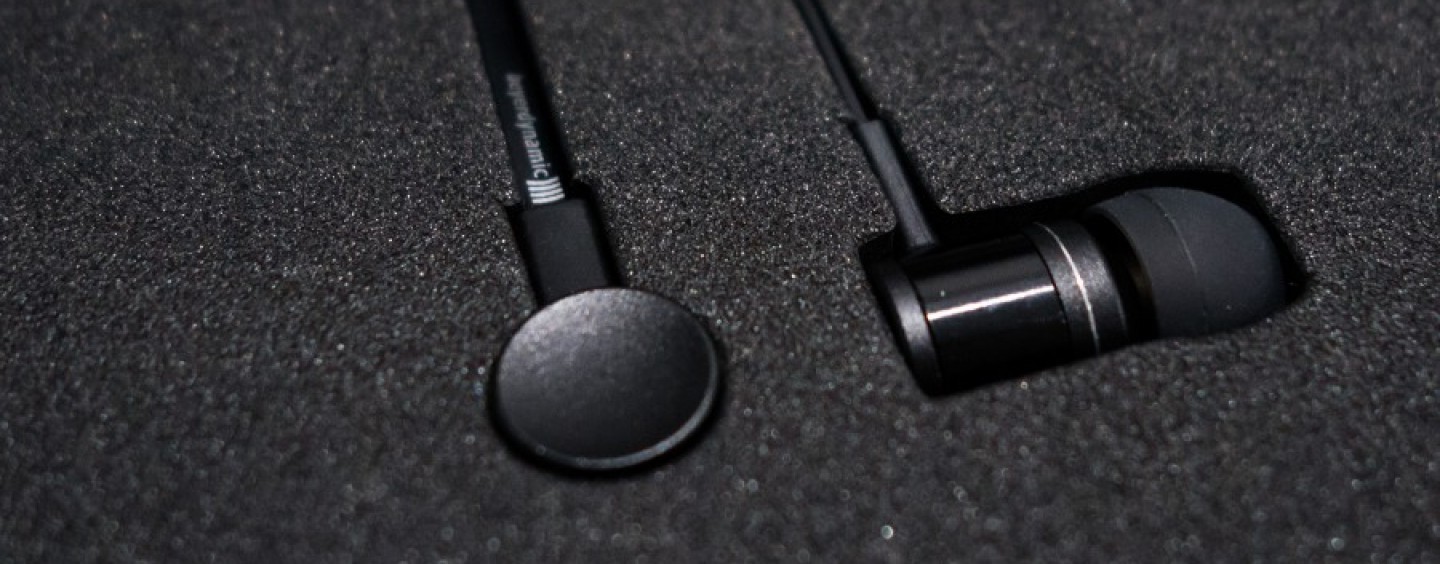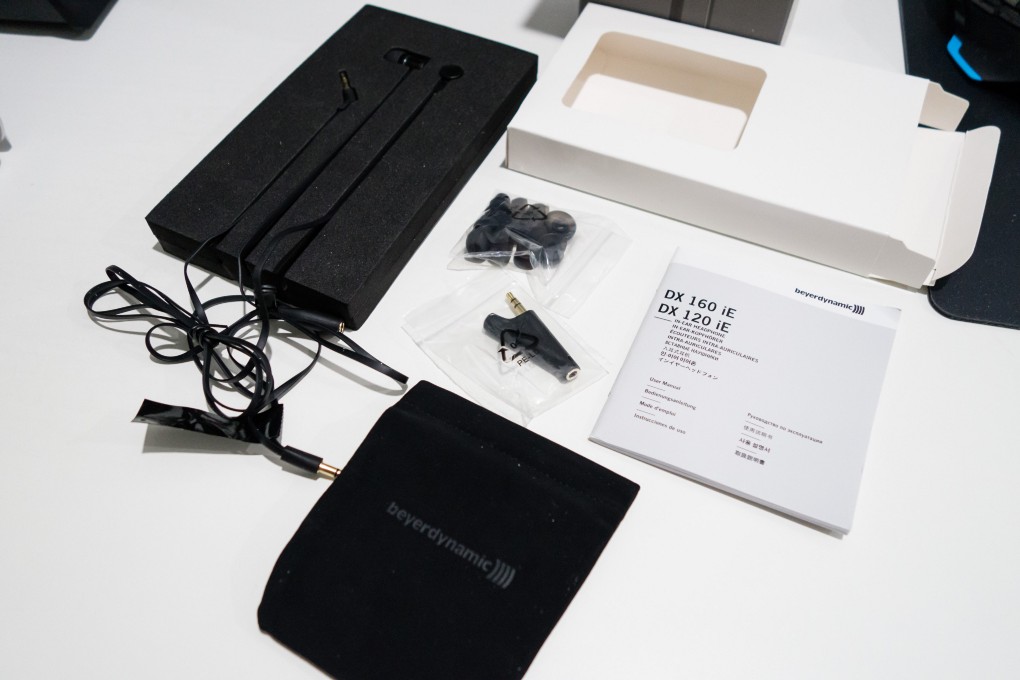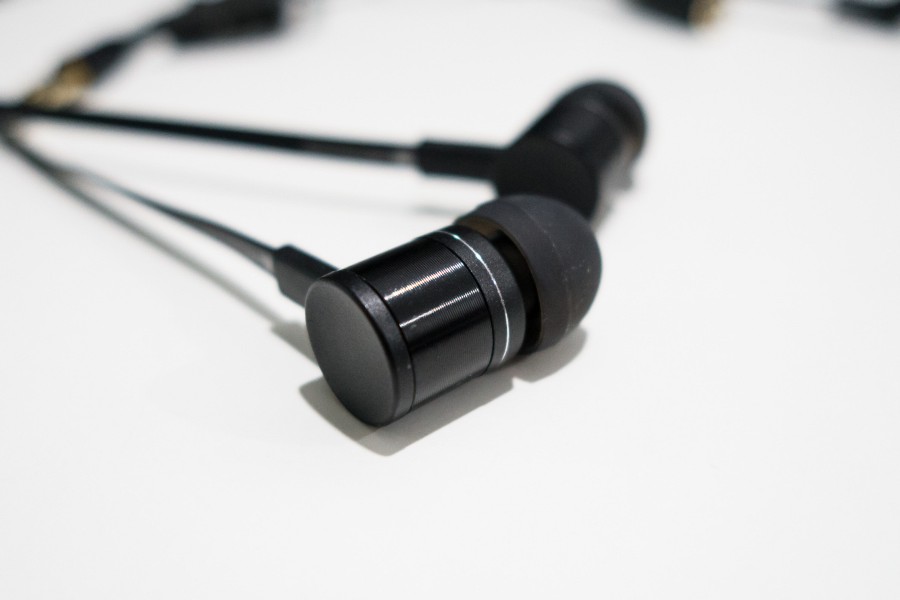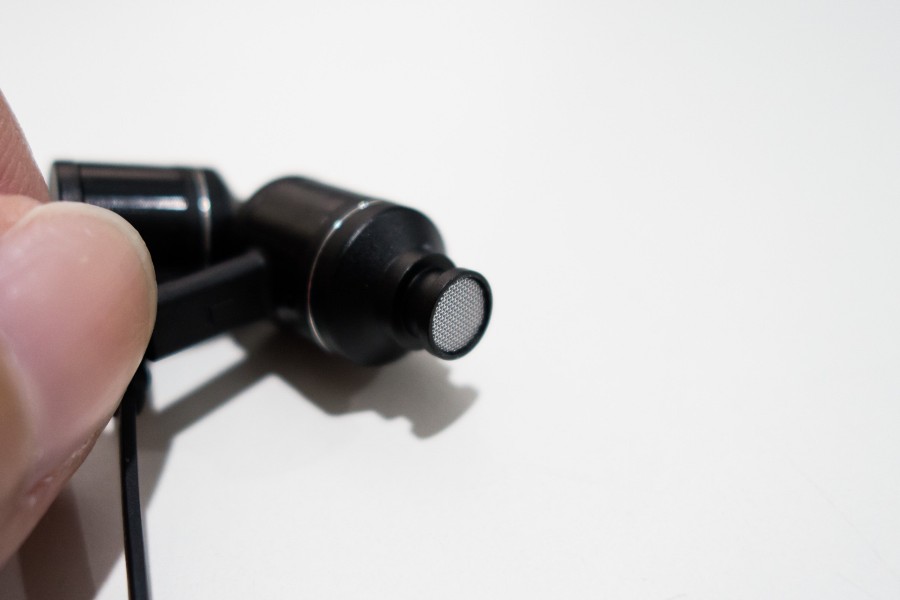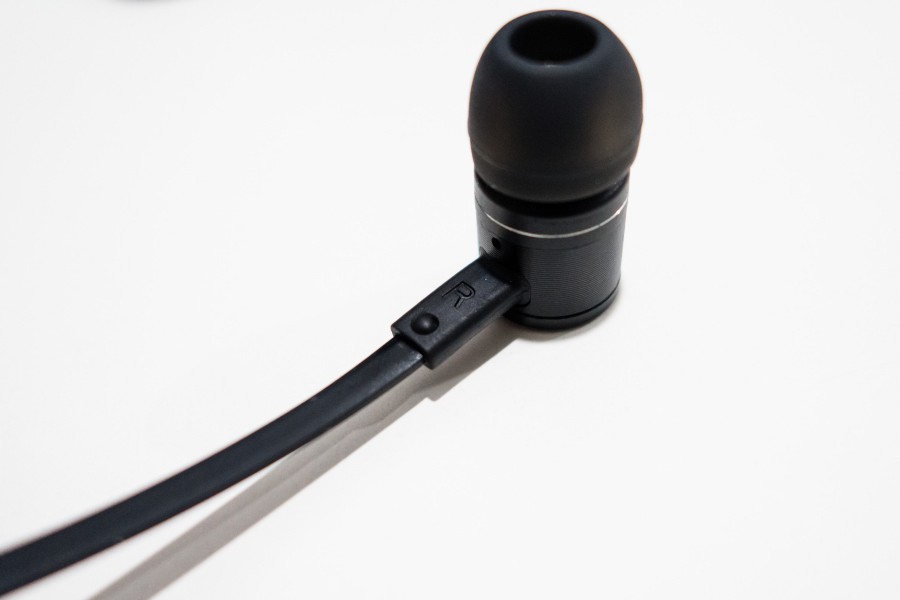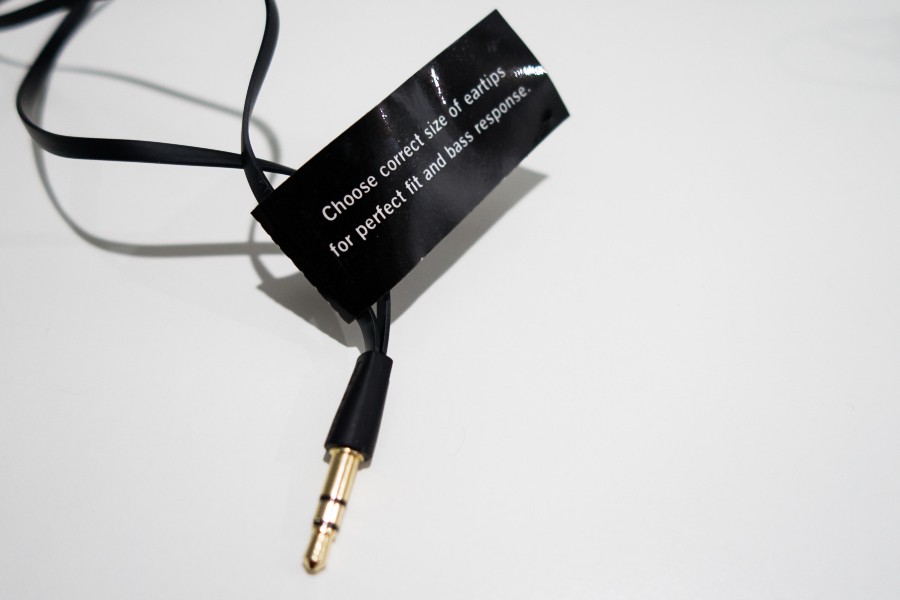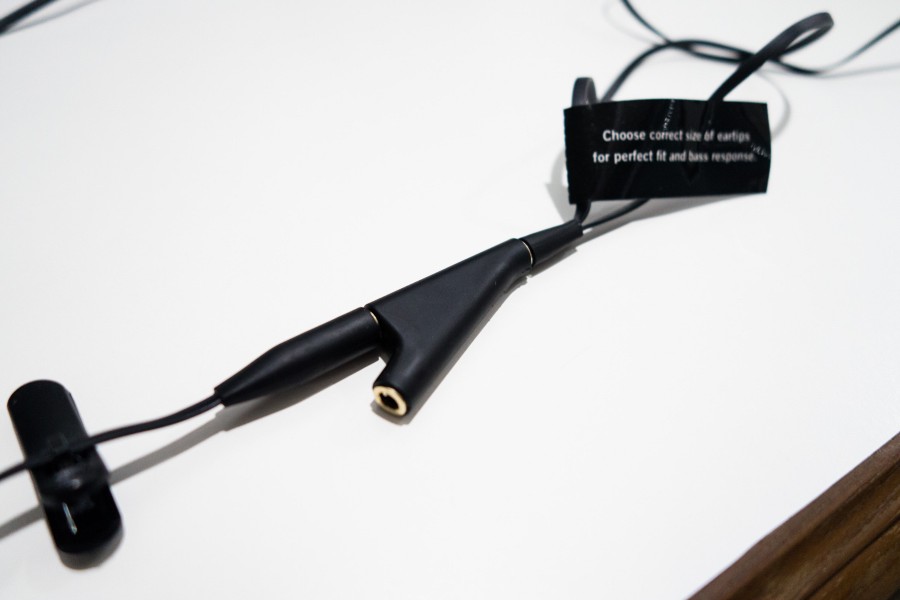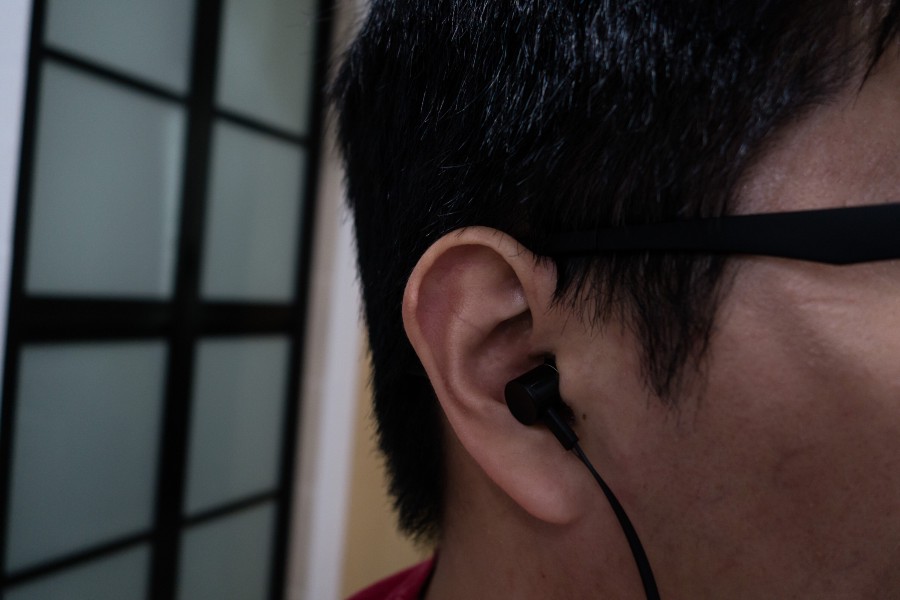Beyerdynamic needs no introduction as a audio company. They provide conference, stage, and recording gear, as well as famous flagship headphones such as the DT 880 and T1.
The DX120 represents Beyer’s foray into the mainstream earphone segment, with a price tag of USD99, or MYR369. It still is a big premium over the typical MYR50 to MYR100 (or free!) earphone most consumers have, so we’re here to find out whether it’s worth the price tag.
Beyerdynamic DX 120 iE Specifications
Transducer Type: Dynamic
Speaker Size: 10 mm
Frequency Range: 12–23,000 Hz
Normal impedance: 47 Ohm
Sensitivity: 107 dB
Cable length: 1.2 m (0.3 m without extension)
Connector: 3.5 mm jack plug.
Beyerdynamic DX 120 iE Packaging and Accessories
Beyerdynamic has put the DX120 into a nice little retail package. It comes in a sleek grey box that shows off the earphones in a front flap.
The inside of the packaging is spartan and functional, with black foam that holds and absorbs any shock the earphones might experience in transit. The accessories come in a plain white box.
The tactile and visual contrast of the dense black foam and smooth white box is definitely one that seems to say, “Hey these are professional earphones — well-packaged and no-nonsense.”
Seriously, it even comes with a manual to teach you how to change eartips. When’s the last time you’ve seen a manual for earphones?
What’s included:
- Beyerdynamic DX 120 iE Earphones
- Extension Cable
- Cable clip
- 5 pairs of variously sized single-flanged silicon tip (1 attached to the earphone)
- 1 pair bi-flanged silicon tip
- 1 pair tri-flanged silicon tip
- 3.5mm male to 2 female audio splitter
- Soft carry bag
- Earphone manual
Build Quality
The full-metal DX120 are adorned with shiny aluminium rings and matte black plastic to give off a really classy appearance. Despite being made of metal, the earphones are really light and helps a lot with comfort.
The main earphone port is covered with a metal mesh, which will keep out dirt with ease.
The different sides of the earphones are marked on the inside of the strain relief, and the right side has a small bump to help you find the right side in the dark.
The earphones are followed by a strain relief into the cables. The cables are flat and rubbery, which helps with microphonics and tangling. They do seem relatively thin at 2.5 mm, and as much as I trust Beyer’s quality, they do seem less assuring than say the Philips S2’s 4.5 mm flat cable.
The first part of the cables end at 0.3 m in a gold-plated 3.5mm connector, which you can plug into the extension cable. If you wish to share music with someone else, you can plug the audio splitter first, then the extension cable beneath it as such:
Note: Using audio adapters to share music seems convenient. However, (1) your music player or amplifier will have to drive two earphones instead of one; (2) if you are using 2 earphones which are different, they might have different volume levels due to sensitivity and impedance differences.
The extension cable is similarly flat and rubbery, and ends with a 45 degree gold plated 3.5mm plug.
Wearing the DX120 is really comfortable due to the light weight, small bullet-sized shape, and great silicon tips. There’s no soreness even after hours of listening and you simply forget they’re there.
Depending on the size and shape of your ears, they’re small enough to wear while sleeping without it pushing into your ears. So you can listen to Bach and sleep faster!
Overall the build quality is great as expected of Beyerdynamics. Though, as a earphone in the RM300–400 range, it’s build quality is pretty much on par with others like the Philips Fidelio S2, Hifiman RE-400, Shure SE-215.
The only thing missing is an inline mic + control, which is kind of odd considering the lower end earphones from Beyerdynamics do have inline mics.
Isolation & Microphonics
In terms of isolating sound the DX120 does a fairly good job with the stock silicon eartips.
Without music, you can hear some speech and low frequency sounds. Most high frequency sounds are attenuated.
With music, chances are you won’t hear anyone speaking to you, and it will drown out that annoying train/bus noise.
Microphonics — sound due to bumping and rubbing the cable — is a minor issue, and the cable clip helps if you walk around while wearing the DX120. It would be amazing, and I can dream, that Beyer includes cloth/Kevlar cables like the Hifiman RE400/600 which absorbs microphonics superbly.
Sound Quality
One thing great about the Beyerdynamic DX120 is that they have a relatively high impedance at 47 Ohms, which improvesdamping factor and reduces hiss. Yet, it can be played by any player out there, because it has a high sensitivity of 107dB/mW.
I listened to the Beyerdynamic DX120 through 3 different sources — Desktop to Fiio E17, iPhone 6, and Macbook Pro. As a whole, there isn’t much difference when playing the DX120 through 3 different sources, except for the limitations of the sources themselves. The Fiio E17 naturally sounds the best with plenty of power, separation, detail, and a clean background. The iPhone and Macbook Pro both seem to sound a tiny bit more congested and narrow due to their higher levels of distortion and crosstalk.
Thus, my impressions will be based off listening sessions on the Fiio E17.
My test playlist contains a mix of modern orchestral pieces, ballads, pop, jazz, house, power metal, rock, and acoustic pieces:
Sound Signature & Analysis
The overall sound signature is bassy and warm. It reminds me of the Sony MH1C, but with lots more refinement.
The DX120’s bass extends audibly to about 16 Hz and peaks at about 43hz. It is full bodied and visceral. In orchestral pieces (Legend of Zelda, Final Fantasy: Main Theme, Dvorak No. 9), you can feel the overtones and texture of bass strings and brass instruments. In pop, R&B, acoustic pieces (Why Don’t We Just Dance, Boyfriend, Her Morning Elegance, Sing), drums and percussive instruments bring about a groove that you’ll bop your head to. In electronic, powermetal, and house (Strobe, Ghosts ‘n’ Stuff, Three Hammers), the DX120 truly shines and I can get lost for hours in euphoric beats. A minor issue is that there’s a slight mid-bass bloat, which can blur out extremely fast percussion (Heroes of Our Time).
The DX120’s midrange is smooth and lush, with an emphasis on the lower midrange due to the enhanced bass. As a result, some male vocals will sound louder than female vocals, which tend to be highlighted in male-female duets (Prayer, Just Give Me a Reason). In songs where there are multiple instruments (Bean Fields), it sometimes also presents itself as slight congestion.
The DX120’s treble is clear and extends relatively well. It’s detailed for a warm and bassy earphone. It has a resonant peak at about 7.6khz and 12khz, which is pretty normal for earphones. There’s no sibilance to speak off, and decay for instruments such as cymbals, piano, strings seems slightly short, but I’m definitely nitpicking here.
In terms of presentation, the DX120 is coherent and well-imaged. You can pick out instruments if you listen intently, but it’s not particularly easy to do so. Listening to orchestras and acoustic performances (Hotel California) sound engaging and immersive, with a coherent center image. Very good, but not amazing.
In terms of overall balance, the DX120’s bass is the highlight of the show. While the midrange and treble are good, the balance of the DX120 is such that the bass and lower midrange are particularly emphasized, and also that’s where it’s strength lies.
Despite these minor issues, what’s great is that the DX120 sounds accurate and natural despite being bassy and warm. It’s common to have slight nasalness in vocals, twanging string instruments, or subdued clashes from cymbals in similarly sounding earphones (Fischer Eterna comes to mind), but it’s all well controlled in the DX120.
Gaming & Movies
The DX120 are good for general gaming and movies predominantly due to the amazing bass response.
I would recommend watching movies and playing games with 5.1 channel audio and using Razer’s Surround Pro to synthesize it to a 2.0 signal. It makes a huge difference in terms of soundstaging and the overall immersion of movies.
For games in particular the FPS genre, the DX120 has good enough imaging for you to point out the direction of footsteps and sounds. However, it’s not particularly accurate in terms of distance.
That said, enjoyment from the bass response will probably lead you to discovering simple pleasures such as shooting large caliber sniper rifles and tank shells into the air. Soon you’ll forget all the minor stuff like less-than-pinpoint-accurate imaging.
Overall, the Beyerdynamic DX120 iE is an enjoyable and musical earphone, while retaining detail and accuracy as much as possible. It’s well-built and sleek-looking. The accessories provided will fulfill needs of most people, except for the omitted inline mic and controls.
If you have a budget of RM300–400, and if you are looking for a general all-use earphones, the DX 120 comes highly recommended.

